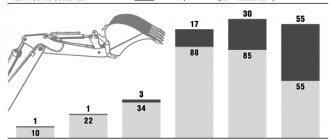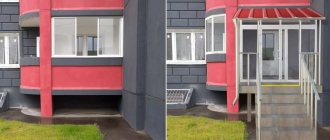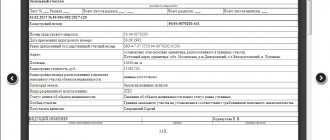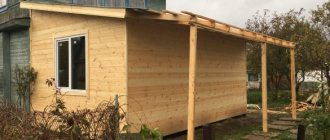Last modified: February 2021
Independent construction must be coordinated with many authorities that determine the compliance of future housing with standards. If property owners ignore the provisions of the law, big problems can arise if the construction was carried out with violations or a sale is planned. Legalization of self-construction is a mandatory procedure that will help you draw up documents for the property and have full right to dispose of it at your own discretion.
To avoid the risk of being fined a large sum or receiving an order to demolish your home, you need to go through the procedure of legalizing an unauthorized construction.
What is recognized as self-construction
According to legislative provisions, unauthorized construction includes various options for buildings that, for various reasons, are not coordinated with the administrative structures of the locality within which they are located.
It is quite easy to recognize what self-building is. There are a number of characteristics characteristic of self-built objects:
- The facility was built on land that was not properly registered as the property of the owner.
- The construction project appeared on a site whose intended purpose did not imply this use option.
- A house or other structure was built, bypassing the approval of various administrative structures.
- The construction of the facility occurs in violation of urban planning standards and other requirements (for example, fire safety), as a result of which it was not possible to obtain development approval.
Any of these options is a serious reason to worry about the future ownership and right to dispose of property. The faster the issue of illegal building on a private plot is resolved, the fewer problems await the owner.
Conditions of the procedure
Regardless of the chosen method of legalizing a building, it must necessarily meet a number of requirements and urban planning standards.
The main conditions are:
- the land area on which the object is built is owned by the applicant;
- the category of the site allows the construction of real estate on it;
- the construction site should not violate the rights and interests of unauthorized citizens, or threaten their health or life;
- State and municipal authorities have no claims to the building.
If part or at least one of the requirements is not met, the issue will most likely be refused until the shortcomings are eliminated. If the violations are considered particularly severe, the structure will be destroyed.
One more point is important. If the issue is successfully resolved and the unauthorized construction is legalized, the tax for the last 3 years will be recalculated. If the plot has been owned for more than 10 years, contributions can be accrued for this entire period.
Sequence of actions to legitimize self-construction
When the building has already been erected, all that remains is to choose exactly how to resolve the problem of unauthorized construction:
- a simpler option is the administrative approval procedure;
- if difficulties arise, through a statement of claim to the court.
The second option of the procedure is more expensive and complex, and is used only when the option of simplified approval with the administration did not work out.
We draw attention to the Federal Law of August 3, 2018 N 339-FZ, according to which Art. 222 of the Civil Code of the Russian Federation “Unauthorized construction” were amended.
Right to legalization
Before deciding on the course of action, you should assess your chances of success based on the established rules for registering self-construction.
To legalize a house without a building permit, the following issues must be resolved:
- Right to land. The lack of permits does not exclude the possibility of legalizing unauthorized construction, but makes it more difficult. To apply for legalization of rights to real estate, you must be the owner of the land, or rent it under certain conditions.
- Compliance of the type of construction with the intended purpose of the land (for example, a residential building on a plot for individual housing construction).
- Characteristics of the object. The construction must comply with the restrictions established within the territory plan and permitting papers.
- Respect for the interests and rights of other persons, guaranteeing the absence of preconditions that threaten the well-being of citizens.
- Registration of rights to real estate in good faith.
The object requires preliminary registration. This will allow you to go to court in the future if legalization in a simplified manner turns out to be impossible.
Download the Claim for recognition of ownership of an unauthorized construction. Sample (22.1 KiB, 6,421 hits)
Statement of claim for recognition of ownership of a property. Blank (21.4 KiB, 3,731 hits)
Simplified design
The further course of action depends on the specific circumstances of the development and the type of object. For buildings with non-residential premises erected on the territory of a gardening partnership, the algorithm of actions is as follows:
- Order a technical plan through the cadastral service. Preparation of a technical plan by an engineer is a paid procedure that requires costs.
- Payment of the property registration fee (you can use the MFC terminal or any other ATM).
- Submitting an application for registration of property rights through an MFC employee. The prepared technical plan is attached to the application.
- Over the next couple of weeks, the issue of the admissibility of registration is considered and then the applicant is issued a document confirming ownership.
- Where and how to obtain a cadastral passport of a land plot?
If there are doubts about compliance with construction rules or there are complaints about the procedure being carried out, Rosreestr has the right to refuse registration. Then the owner solves the problem through the court.
If the property is a building on your own plot of individual housing construction or private subsidiary plot (personal subsidiary plot), in order to obtain a technical plan, the cadastral engineer must obtain an agreed construction permit from the owner.
If there is no building permit
In Penza, the building of the St. Michael's Monastery was demolished. penzanews.ru
In case of unauthorized development, there is no building permit. This means that the owner will have to visit the MFC to submit a request to provide the GPZU with an urban planning plan for the land. After receiving the GPZU, a site diagram is prepared identifying the location of the construction site. They again contact the MFC for approval of construction with an appendix to the GPZU application and a prepared site diagram.
A building permit gives the right to carry out construction work and legalize the object. With a building permit, they are asked to prepare a technical plan, on the basis of which the construction is then registered.
If a refusal is received in the process of obtaining a permit, preparing a technical plan or registration, the next step in how to legalize self-construction will be a trial.
Judicial approval
Since there are quite a lot of illegal buildings in Moscow and the region (for example, country houses), it is recommended to ensure that the standards and requirements of the law are strictly observed during the construction process. Otherwise, negative consequences cannot be avoided, including complete loss of real estate.
Going to court is always preceded by an attempt to legalize it administratively. It is impossible to bypass the pre-trial procedure for approving construction. Only after receiving a refusal at any stage of legalization does a person have the right to have the case heard in court.
A statement of claim for recognition of the right to property is drawn up in accordance with the general rules of the Code of Civil Procedure of the Russian Federation.
Download the Claim for recognition of ownership of an unauthorized construction. Sample (22.1 KiB, 6,421 hits)
Statement of claim for recognition of ownership of a property. Blank (21.4 KiB, 3,731 hits)
Basic requirements for a claim:
- An indication on what grounds the citizen erected a building on the plot of land in question (private property or long-term lease). To confirm the words, refer to the attached copy of the document - an extract from the Unified State Register of Real Estate, supplemented by a cadastral plan.
- Description of the type of property specified in the technical plan.
- The text of the statement of claim indicates the person who built the object and the time of construction (if the work was carried out by contractors, attach a copy of the contract with them; if the construction was carried out on their own, checks, receipts for the purchase of materials).
- Since going to court is preceded by a refusal of approval, they indicate who exactly rejected the request for a permit (attach a copy of the refusal letter) and give the reasons that forced the refusal.
Due to the fact that the previous coordination was carried out with municipal structures, it is he who is named as the defendant in the lawsuit.
- Instructions for registering ownership of a house: step-by-step description
After preparing the claim, you need to calculate how much it costs to pay the fee for considering the case in court. There is no single amount of duty established, since it is calculated based on the value of the illegal object. To correctly calculate the amount, turn to real estate appraisers for an expert opinion.
As judicial practice shows, the result of the consideration of the case depends entirely on the argumentation of the claims with references to the legislation and the attached documentation.
Download and read: List of positions of higher courts to Art. 222 of the Civil Code of the Russian Federation “Unauthorized construction” (72.6 KiB, 4,159 hits)
The prepared package of papers for the court includes:
- copies of the application and attachments prepared for the parties to the proceeding;
- the assessment report on the basis of which the state duty was calculated;
- papers indicating that the land belongs to a specific owner;
- technical plan, other documentary evidence of the presence of unauthorized construction on the site;
- certificates indicating the absence of violations of SNiPs and threats to the life and health of others;
- a document confirming the fact that the construction of the facility did not infringe on the rights of other citizens;
- papers on preliminary work on approval and responses from municipal authorities (with approval or refusal);
- paid receipt of state duty.
The place for filing a claim is chosen based on the general rules:
- in the region where the disputed object is located;
- in the magistrate's court if the value of the property is less than 50 thousand rubles;
- in the district court if the cost of the object exceeds 50 thousand rubles.
After hearing the parties, their positions and arguments, the judge makes a decision. If the verdict is positive, the owner, together with the resolution that has entered into force, applies to the MFC or directly to the Rosreestr branch to register the property.
When registering, a new package of documentation is attached:
- an application requesting to register the property;
- a receipt for payment of the registration fee;
- applicant's passport;
- a court decision indicating that it has entered into force;
- technical passport of the object of legalization.
Dacha amnesty
This program was developed on the basis of the residential privatization program. That is, for a certain period of time, owners of summer cottages and land plots for individual housing construction could register ownership of their buildings in a simplified manner. At its core, this is the legalization of self-construction.
For a long time, many Russians did not think about bringing the structures on their dacha plots “out of the shadows.” The main disadvantage is that after the right arises, the obligation to pay property tax will arise. Many people don't want to do this!
On the other hand, if the right is alienated legally, then the subject of the transaction will be only land, since the right to it is registered. Buildings cannot be sold/donated/bequeathed. Accordingly, the cost of such a site will be much lower.
Unlike the housing privatization program, the dacha amnesty has its own validity period. In particular:
- You can take advantage of the opportunity to register property rights to a land plot according to a simplified scheme until March 2021;
- You can take advantage of a similar opportunity for illegal construction on this site until March 2021.
The extension occurred in March 2021, when deputies again discussed the possibility of increasing the duration of the program and the prospects for the receipt of tax funds into the budget. Therefore, it was decided to extend the validity period of the simplified procedure.
Important! After receiving an extract from the Unified State Register of Real Estate on the registration of the property right to the building, the owner has the opportunity to independently alienate the right in any legal way. But do not forget about the obligation to pay income tax after the sale and the right to a property deduction.











